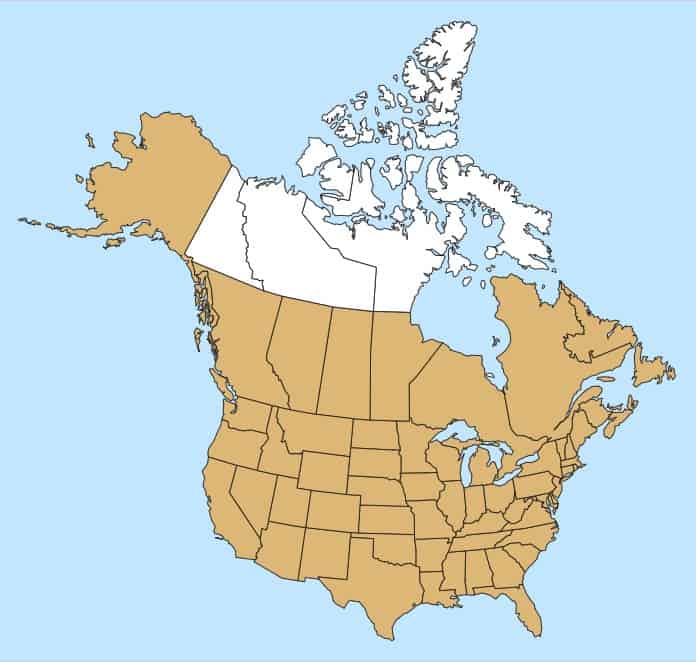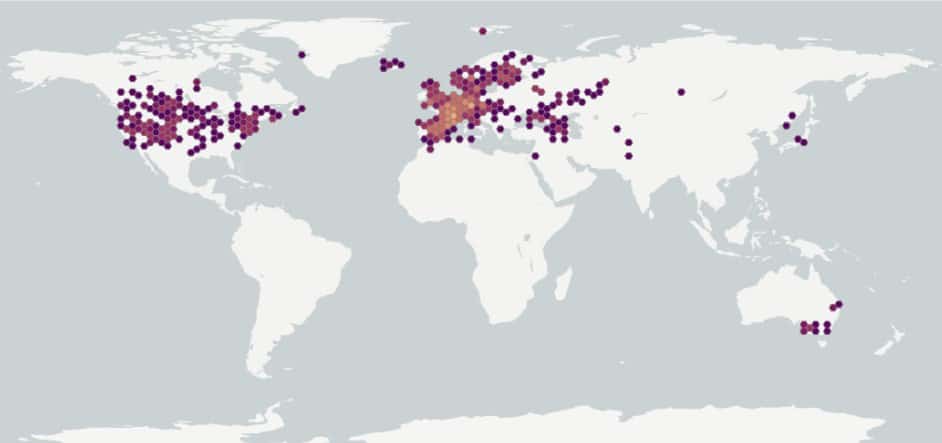Conringia orientalis
Explore More :
Explore plus :
Overview
Aperçu
Regulation :
Remarques Réglementation:
- Quarantine lists of countries e.g. Mexico *may be updated without notice
Regulation Notes:
On quarantine lists of countries e.g. Mexico*.
*Quarantine lists of countries may be updated without notice.
Distribution :
Répartition :
This species is native to Africa, Asia and Europe. It is naturalized across Australasia, North and South America (USDA-ARS 2017), and widespread in the United States (USDA-NRCS 2017).
Habitat and Crop Association :
Habitat et Cultures Associées :
This species prefers cultivated areas, disturbed areas, grain fields, waste places, roadsides and gardens (FNA 2017).
Economic Use, cultivation area, and Weed Association :
Utilisation économique, zone de culture et association de mauvaises herbes :
Duration of Life Cycle :
Durée du cycle vital:
Annual
Dispersal Unit Type :
Type d’unité de dispersion :
Seed
General Information
RENSEIGNEMENTS GÉNÉRAUX
Hare’s-ear mustard flowers from May to August (FNA 2017). It was a frequent contaminant of cereal and clover seed from central Europe in the 19th and early 20th centuries (BRC 2017). It was first collected in New York in 1879 on ballast.
.Identification
Identification
-
Seed
Size
- Seed length: 2.7 – 3.6 mm (average 3.2 mm); width: 1.3 – 2.1 mm (average 1.8 mm)
Shape
- Seed is oblong with a prominent radicle giving the appearance of a rib along one side; compressed
Surface Texture
- Seed surface is reticulate with small interspaces; these may be shallowly concave or have a porous appearance
- Persistent tissue at the hilum end appears pulled out from seed surface
Colour
- Seeds are light to dark reddish-brown
- Hilum area is darkened, hilum tissue is yellowish-white
Other Features
- Pods are straight, four-angled, occasionally cylindrical with slight constrictions between the seeds (FNA 2017)
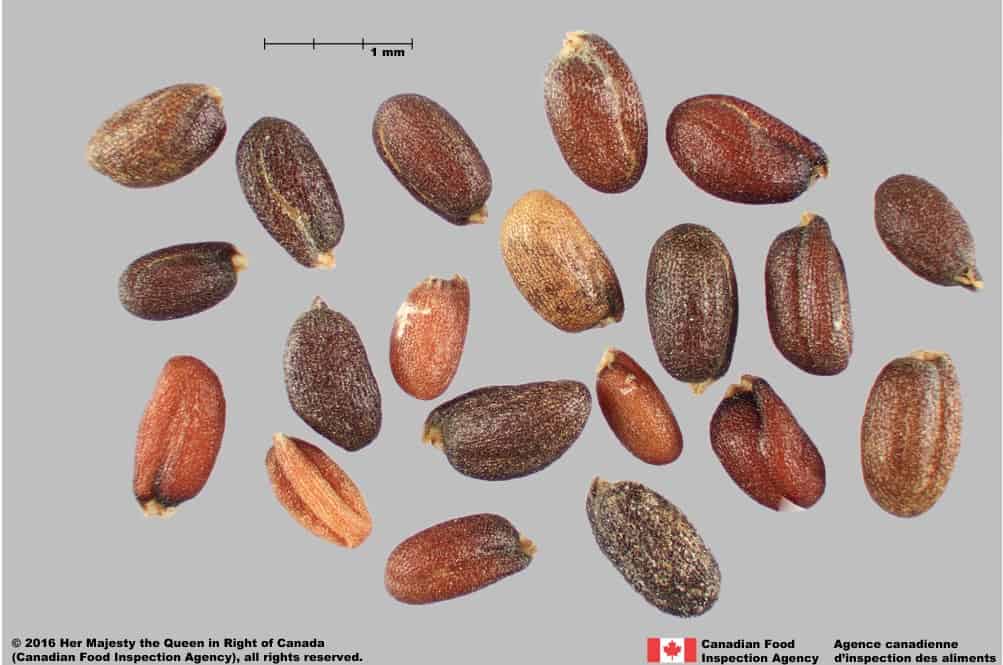
Hare’s-ear mustard (Conringia orientalis) seeds

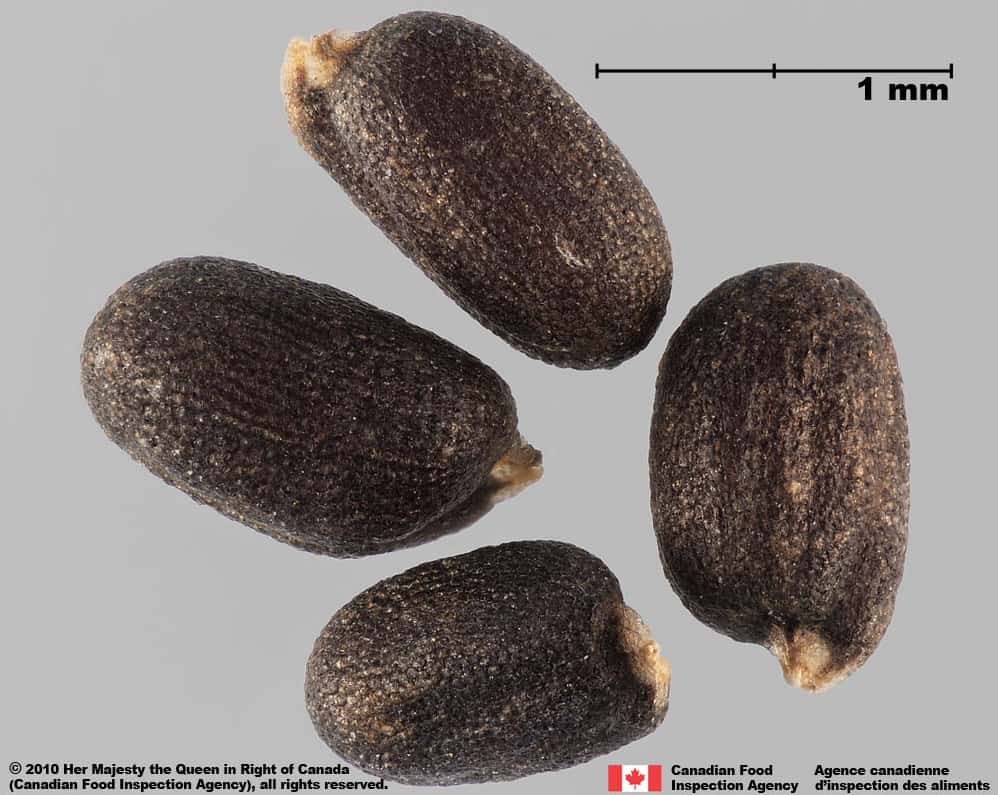
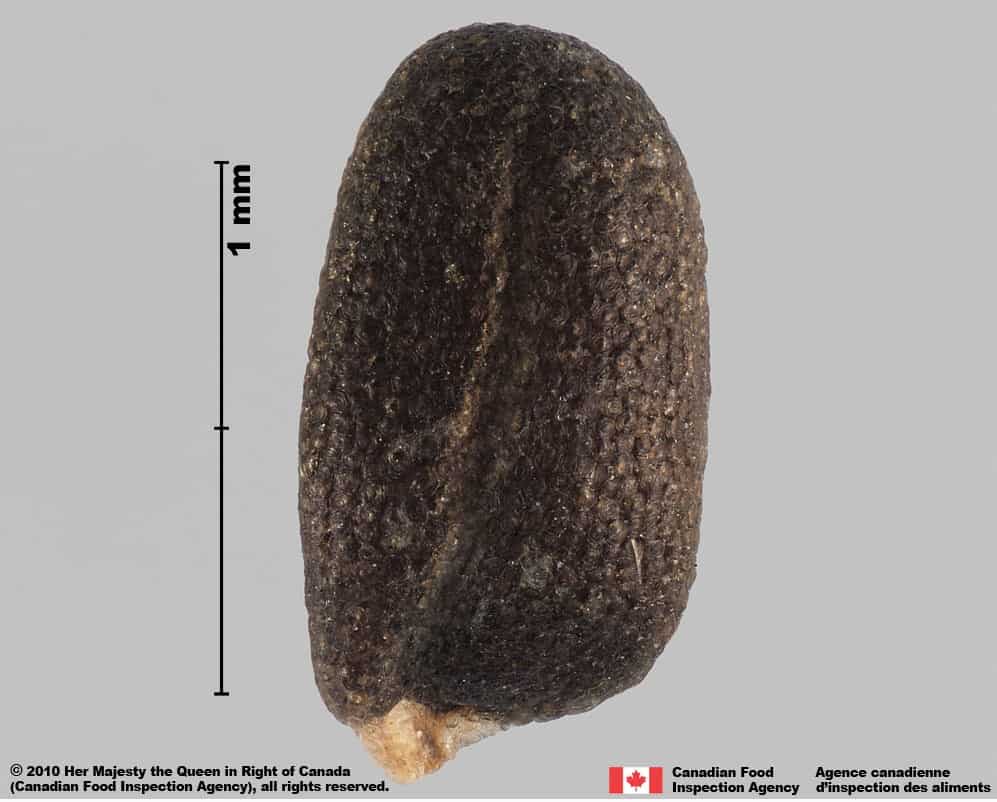
Identification Tips
CONSEILS POUR L’IDENTIFICATION
Additional Botany Information
AUTRES RENSEIGNEMENTS BOTANIQUES
Similar Species
ESPÈCES SEMBLABLES
Similar species are based on a study of seed morphology of various species, and those with similar dispersal units are identified. The study is limited by physical specimen and literature availability at the time of examination, and possibly impacted by the subjectivity of the authors based on their knowledge and experience. Providing similar species information for seed identification is to make users aware of similarities that could possibly result in misidentification.
Hesperis matronalis (dame’s-rocket)
Hesperis matronalis seeds are a similar reddish-brown colour, and reticulate surface with a prominent rib formed from the radicle.
Hesperis matronalis seeds are generally smaller (average length: 2.6 mm, width: 1.4 mm), angular shaped, the ends appear pinched, the surface has negative reticulation with grooves and a porous appearance with smaller interspaces. The hilum tissue is not evident. The pod of dame’s-rocket is cylindrical with slight constrictions between the seeds.
Click to select species
Cliquez pour sélectionner les espèces
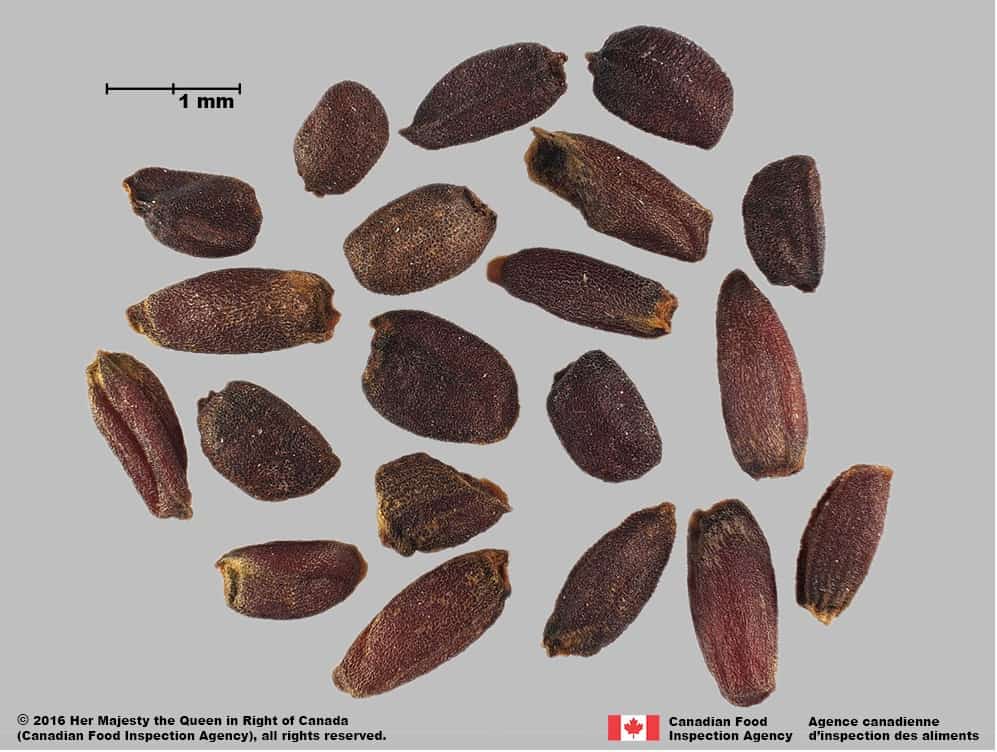
Hesperis matronalis
Comparison Window
Fenêtre de comparaison
MAIN SPECIES
ESPÈCES PRINCIPALES
Conringia orientalis

Conringia orientalis
Brassicaceae
Hare’s-ear mustard (Conringia orientalis) seeds
MAIN SPECIES
ESPÈCES PRINCIPALES
Conringia orientalis

Conringia orientalis
Brassicaceae
Hare’s-ear mustard (Conringia orientalis) seeds
MAIN SPECIES
ESPÈCES PRINCIPALES
Conringia orientalis

Conringia orientalis
Brassicaceae
Hare’s-ear mustard (Conringia orientalis) seed
SIMILAR SPECIES
ESPÈCES SEMBLABLES
Hesperis matronalis

Hesperis matronalis
Brassicaceae
Hesperis matronalis seeds
SIMILAR SPECIES
ESPÈCES SEMBLABLES
Hesperis matronalis
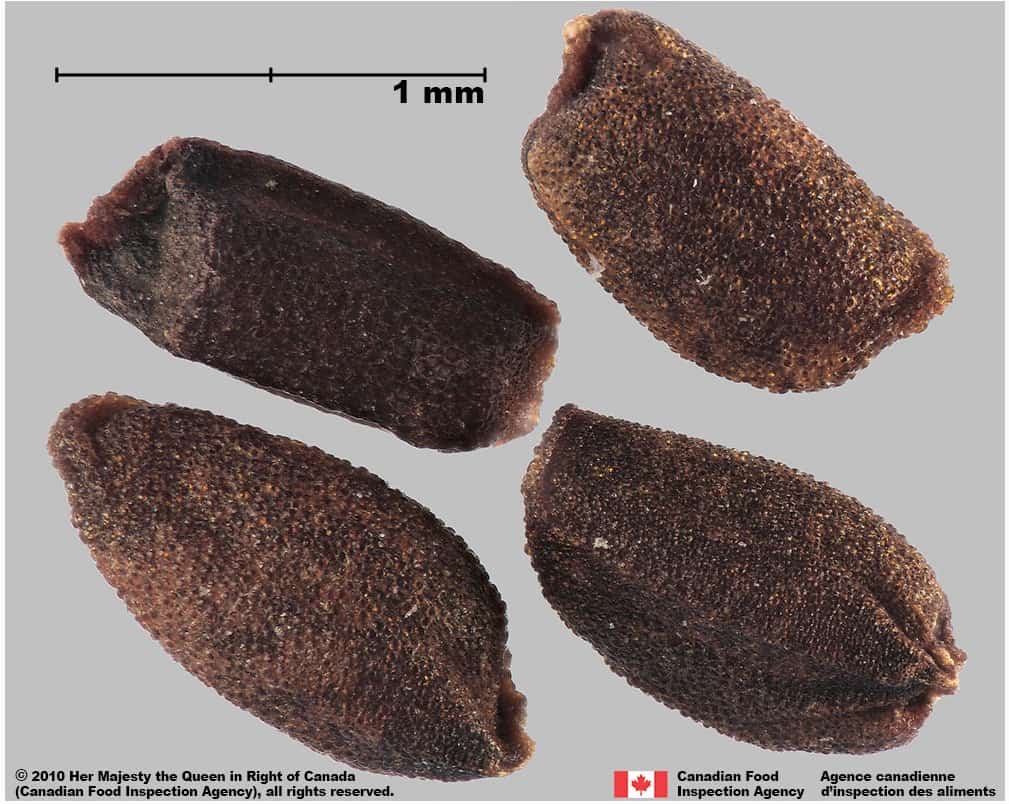
Hesperis matronalis
Brassicaceae
Hesperis matronalis seeds
SIMILAR SPECIES
ESPÈCES SEMBLABLES
Hesperis matronalis
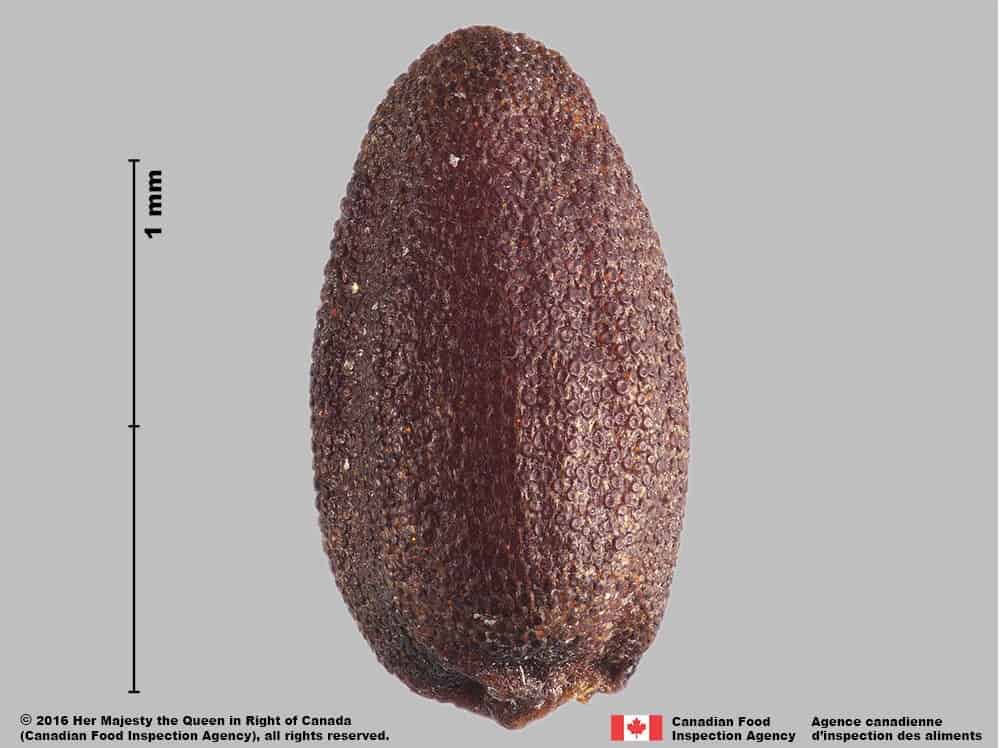
Hesperis matronalis
Brassicaceae
Hesperis matronalis seed
SIMILAR SPECIES
ESPÈCES SEMBLABLES
Hesperis matronalis
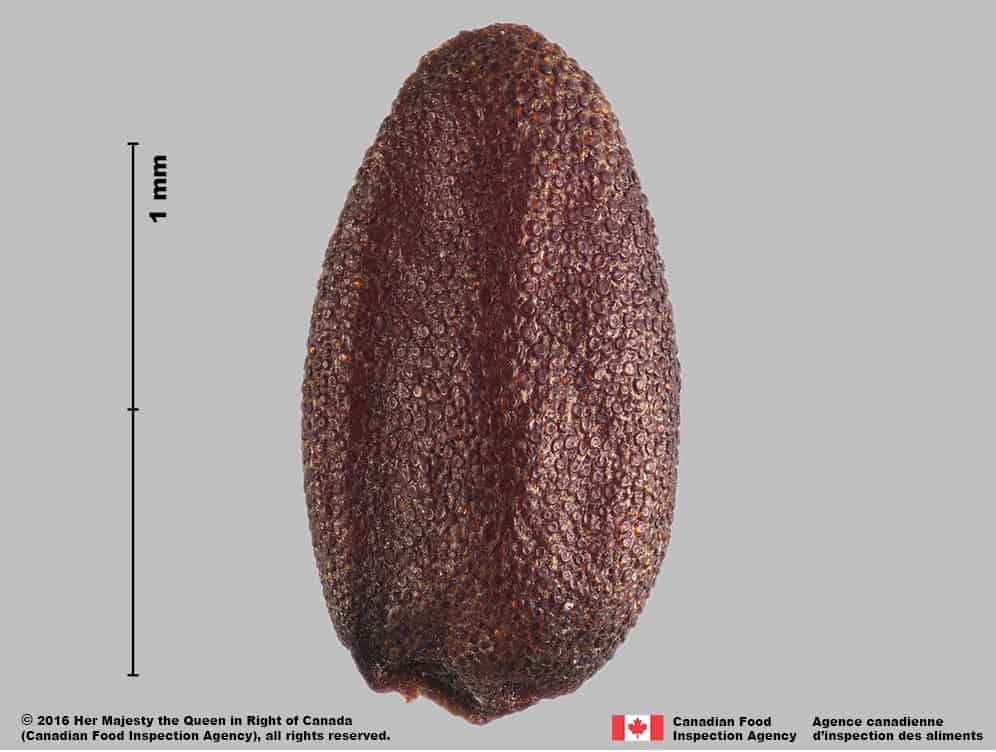
Hesperis matronalis
Brassicaceae
Hesperis matronalis seed
Need ID Help?
Besoin d’aide pour l’identification?
Reference(s)
Référence(s)
Biological Records Centre (BRC). 2017. Online Atlas of the British and Irish Flora. Developed by the Botanical Society of the British Isles and the Biological Records Centre (BRC), http://www.brc.ac.uk/plantatlas/ Accessed March 28, 2017.
Flora of North America (FNA) Editorial Committee, eds. 1993+. Flora of North America North of Mexico [Online]. 22+ vols. New York and Oxford. http://beta.floranorthamerica.org. Accessed April 25, 2017.
Flora of North America (FNA) Editorial Committee, eds. 1993+. Flora of North America North of Mexico [Online]. 22+ vols. New York and Oxford. Accessed December 29, 2022.
Global Biodiversity Information Facility (GBIF) Secretariat. 2022. https://doi.org/10.15468/39omei Accessed via https://www.gbif.org/species/3040913 Accessed December 29, 2022.
U.S. Department of Agriculture-Agricultural Research Services (USDA-ARS). 2017. Germplasm Resources Information Network (GRIN), https://npgsweb.ars-grin.gov/gringlobal/taxon/taxonomysearch Accessed April 25, 2017.
U.S. Department of Agriculture-Natural Resources Conservation Service (USDA-NRCS). 2017. The PLANTS Database. National Plant Data Team, Greensboro, NC USA. https://plants.usda.gov/home Accessed April 25, 2017.



